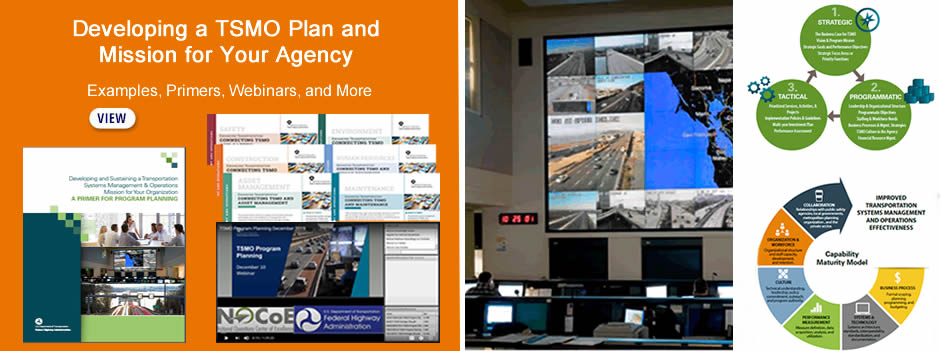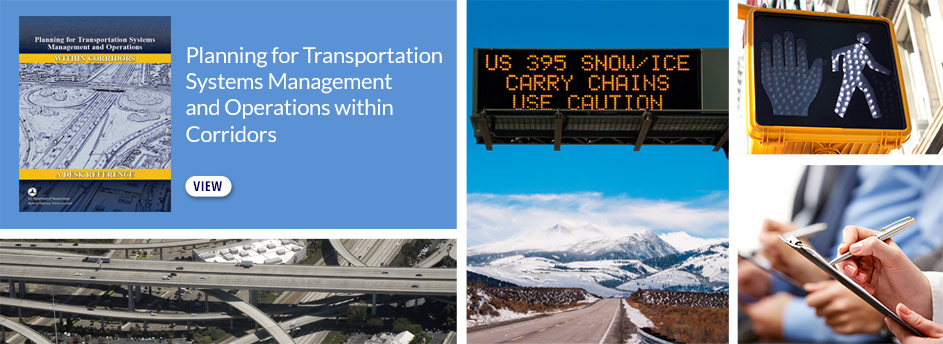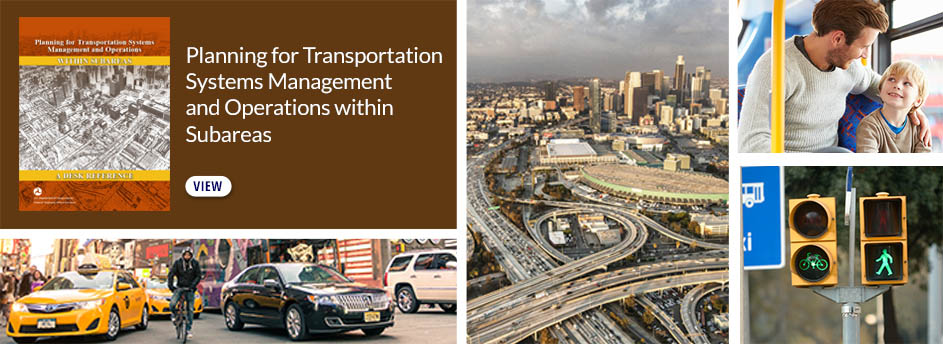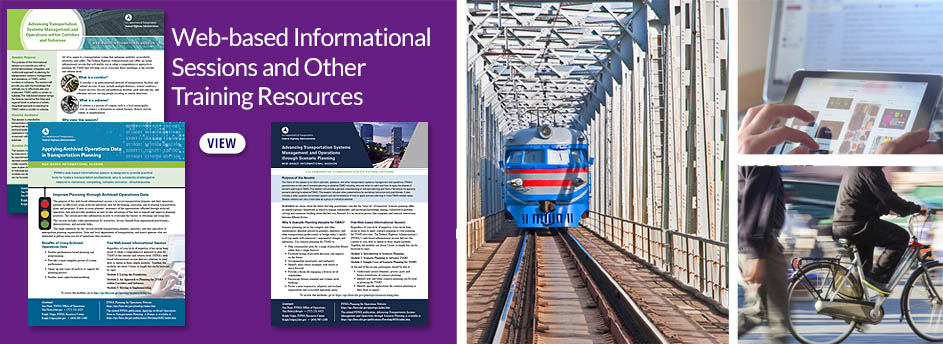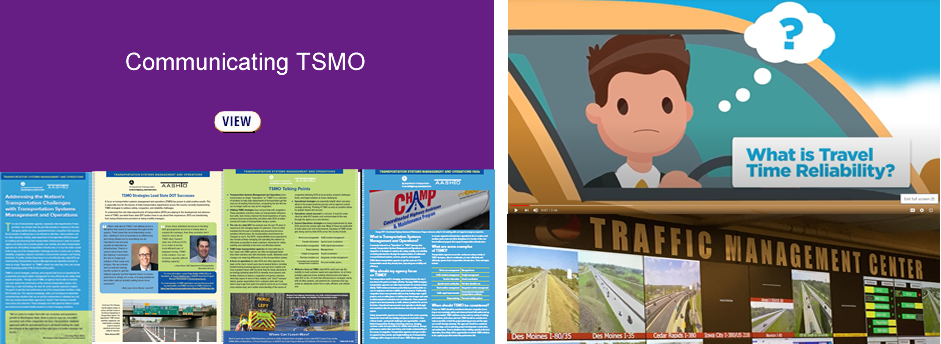The Federal Highway Administration Organizing and Planning for Operations Program supports the integration of Transportation Systems Management and Operations (TSMO) strategies into the planning process and practices and policies of transportation organizations for the purpose of improving transportation system efficiency, safety, reliability, and travel options.
- Learn more about Transportation Systems Management and Operations (TSMO).
- Learn more about organizing and planning for TSMO and our recent resources and activities.
What's New
- TSMO Benefit-Cost Analysis Web-Based Training
- Recent FHWA TSMO Resources
- Current FHWA Organizing and Planning for Operations Activities
- TSMO 101 Web-Based Training
- Understanding and Applying the CMM to Advance TSMO Programs Web-Based Training
- Planning For TSMO Practitioner Reference
- Updated FHWA Asset Management for Operations Website
- Travel Time Reliability Reference Gide
HOW DOES TSMO RELATE TO ...
- Performance-Based Planning and Programming
- Designing for Operations
- ITS Architecture and Systems Engineering
- Livability, Sustainability and Smart Cities
- Traffic Signal Programs
- Corridor Management
- Active Transportation and Demand Management
- Transportation Demand Management
- Traffic Incident Management
- Travel Time Reliability
- Asset Management for Operations
- Complete Streets

